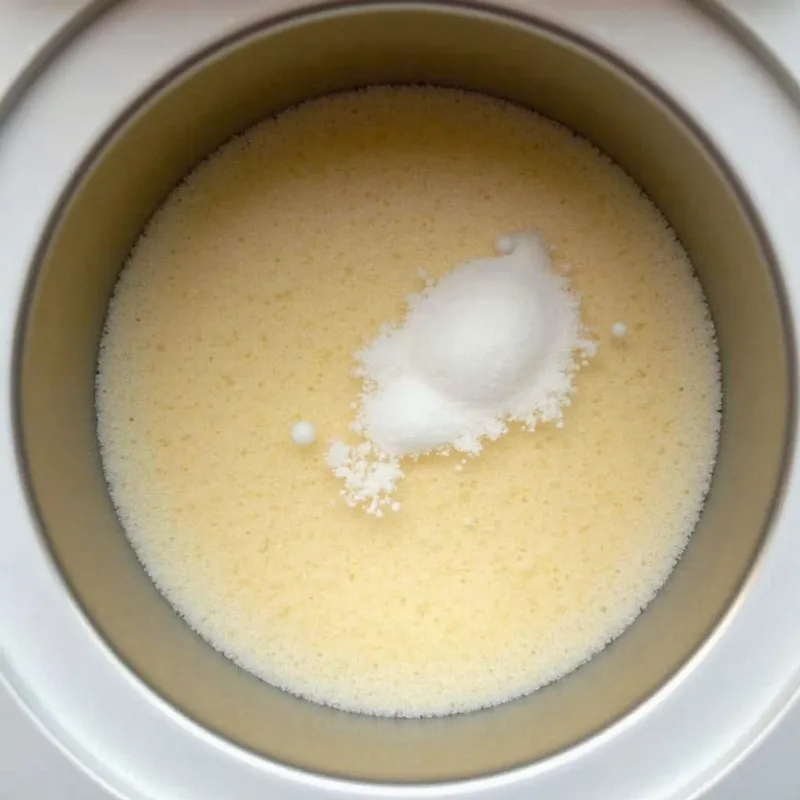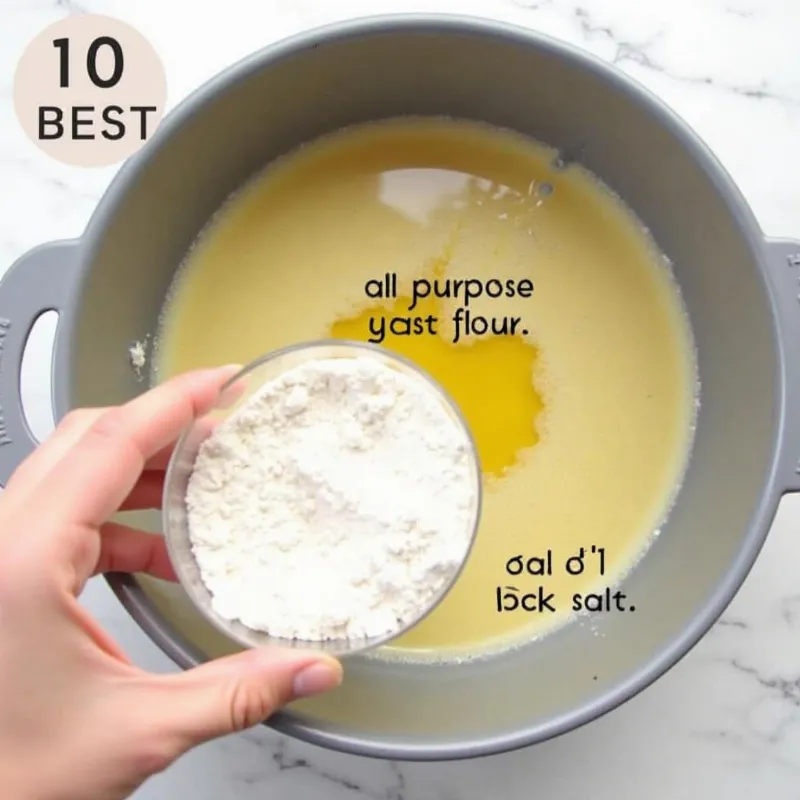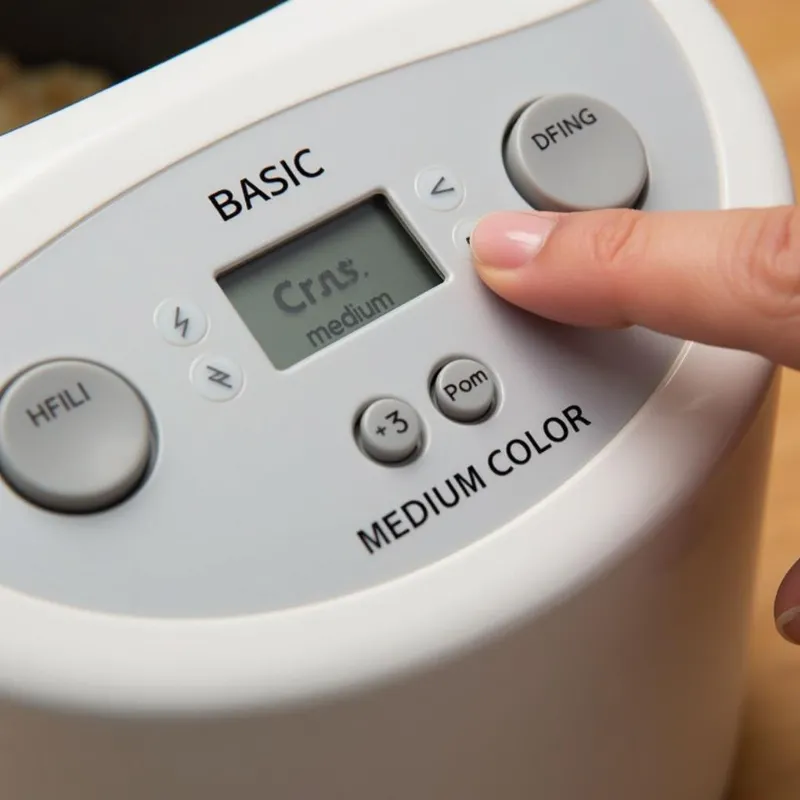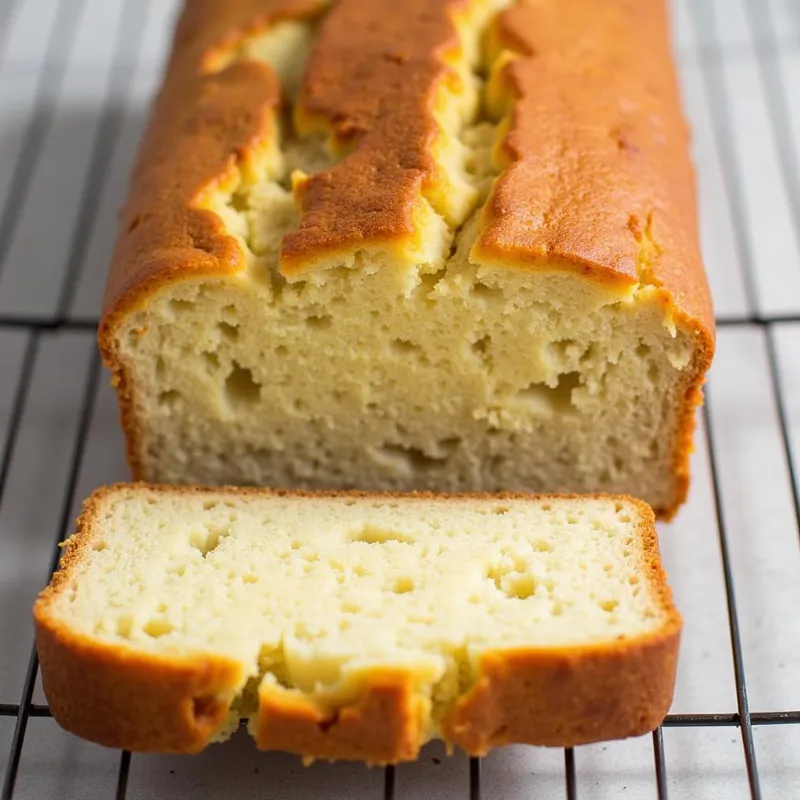Making delicious vegan bread at home is easier than you might think! This recipe for vegan bread in a breadmaker takes the guesswork out of baking, delivering a perfectly browned, fluffy loaf every time. No kneading required!
Why You’ll Love This Recipe
- Simple ingredients: This recipe calls for pantry staples, and you might already have everything you need.
- Foolproof method: The breadmaker does all the heavy lifting, making this recipe perfect for beginners.
- Deliciously versatile: Enjoy this bread plain, toasted, or use it for sandwiches and snacks.
Ingredients You’ll Need
- 1 ½ cups warm water (105-115°F)
- 2 tablespoons sugar (any kind)
- 2 teaspoons active dry yeast
- 3 cups all-purpose flour (or bread flour for a chewier texture)
- 2 tablespoons olive oil
- 1 teaspoon salt
Step-by-Step Guide
- Activate the yeast: In the breadmaker pan, combine the warm water, sugar, and yeast. Let stand for 5-10 minutes, or until the yeast is foamy.
 Yeast Activation in Breadmaker Pan
Yeast Activation in Breadmaker Pan - Add the remaining ingredients: Add the flour, olive oil, and salt to the yeast mixture.
 Adding Flour, Oil, and Salt to Breadmaker
Adding Flour, Oil, and Salt to Breadmaker - Select the setting: Secure the breadmaker lid and select the “Basic” or “White Bread” setting. Choose your desired crust color (light, medium, or dark).
 Selecting Basic Setting on Breadmaker
Selecting Basic Setting on Breadmaker - Bake: Press start and let the breadmaker work its magic! This will usually take around 3-4 hours.
- Cool completely: Once the baking cycle is complete, carefully remove the bread from the breadmaker pan and let it cool completely on a wire rack before slicing and serving.
 Freshly Baked Vegan Bread Cooling on Rack
Freshly Baked Vegan Bread Cooling on Rack
Tips for Success
- Water temperature: Make sure your water is the right temperature (105-115°F) to activate the yeast properly. If it’s too hot, it will kill the yeast; too cold, and the yeast won’t activate.
- Flour power: Different brands of flour absorb moisture differently. You might need to adjust the amount of flour slightly, adding a tablespoon at a time, to achieve a smooth, slightly tacky dough.
- Don’t overbake: Check on your bread towards the end of the baking cycle. If it’s browning too quickly, loosely tent the loaf with foil.
Variations & Serving Suggestions
- Herbs & spices: Add 1-2 teaspoons of your favorite dried herbs (rosemary, thyme, oregano) or spices (garlic powder, onion powder) to the dough for an extra layer of flavor.
- Sweet tooth: Swap the sugar for maple syrup or agave nectar for a touch of sweetness. Add in some raisins, cranberries, or chopped nuts for added texture and flavor.
“Baking vegan bread is all about mastering the basics. Once you’ve got this recipe down, the possibilities are endless!” – Chef Anya Green, Vegan Baking Expert
Enjoy this bread fresh out of the breadmaker with a dollop of vegan butter or your favorite spread. It also makes fantastic sandwiches, toast, croutons, and breadcrumbs!
FAQs
Can I use a different type of flour?
Absolutely! Whole wheat flour, spelt flour, or gluten-free blends work well in this recipe. Keep in mind that different flours absorb moisture differently, so you might need to adjust the liquid amount accordingly.
Can I make this bread without a breadmaker?
Yes! This recipe can be adapted for the oven. After step 2, knead the dough for 8-10 minutes, then let it rise in a warm place until doubled in size. Shape the dough into a loaf, let it rise again, and bake in a preheated oven at 375°F for 30-35 minutes.
How should I store leftover bread?
Store the cooled bread in an airtight container at room temperature for up to 3 days, or freeze for longer storage.
Why didn’t my bread rise?
The most common reason for bread not rising is inactive yeast. Make sure your yeast is fresh and that your water is the correct temperature.
Can I add nuts or seeds to the bread?
Yes! Add up to ½ cup of your favorite nuts or seeds to the dough during step 2.

 Adding Flour, Oil, and Salt to Breadmaker
Adding Flour, Oil, and Salt to Breadmaker Selecting Basic Setting on Breadmaker
Selecting Basic Setting on Breadmaker Freshly Baked Vegan Bread Cooling on Rack
Freshly Baked Vegan Bread Cooling on Rack